Hydrangea StrawberryBlossom
Paniculate hydrangea Strawberry Blossom is an improved, more compact copy of the Vanilla Fries variety. During the period of abundant flowering, it emits a stunning sweet aroma. It is loved by gardeners for the beauty of its inflorescences. The panicles, shaped like strawberries, turn white, pale pink, or crimson when flowering.Thanks to these features, breeders gave the variety the delicious name Strawberry Blossom.
Description of the variety Strawberry Blossom
Hydrangea Strawberry Blossom is a well-branched, fast-growing, medium-sized plant with a lush crown. The shoots are strong, densely leafy, dark brown. The leaf blade is large, oval-sharp, dark green.
|
Strawberry Blossom upright bush |
The cone-shaped inflorescence is large and consists of sterile buds, tightly adjacent to each other. The blooming flowers are fragrant. At the beginning of flowering, the huge panicles are creamy-white in color; closer to autumn they turn pink. After 3 months, the color of the petals becomes bright crimson, while the tip remains white.
Planting hydrangeas in the ground
To plant Strawberry Blossom in open ground, select areas with acidic, fertile soil. Slightly acidic, neutral, alkaline soil is acidified by adding high-moor peat, softwood sawdust or oxalic acid.
Hydrangea grows well in full sun and partial shade. Do not place the seedling on sandy soil. It is scanty and does not retain moisture.
- The optimal soil mixture for the crop is prepared in a container: 1/3 humus and 1/3 acidic peat are added to 1/3 of garden soil. The components are mixed to obtain a homogeneous substrate. It is useful to add 60 g. Diammofosk (phosphorus-potassium fertilizer with minimal nitrogen content) and vermiculite for soil aeration.
- A hole is dug, taking into account the size of the seedling and root system, but not less than 50x50 cm.
- A layer of expanded clay up to 5 cm thick is placed on the bottom. Drainage will prevent stagnation of moisture and rotting of the roots.
- Pour a third of the prepared soil mixture into the hole, pour a bucket of water, and wait for it to be absorbed.
- A seedling is placed in the center, the roots are straightened, and covered with the remaining substrate. The root collar should be at ground level.
- A circle around the trunk is formed, surrounded by an earthen roller, and watered again to remove air voids near the roots.
- The top of the soil is covered with peat, coniferous (pine) litter, and sawdust. Mulch will prevent moisture evaporation and weeds from appearing.
|
Spring planting hydrangeas |
Note! The optimal time for planting in mid-latitudes is spring (from mid-April). The seedling will have time to take root and prepare for its first winter. In the south you can plant in the fall.
Features of caring for hydrangea Strawberry Blossom
The Strawberry Blossom variety cannot be called capricious, but it responds to any attention given with a healthy appearance and abundant, long-lasting flowering. You should adhere to the following care rules:
- Watering. The plant is moisture-loving. The soil is moistened regularly with soft settled or rainwater. An adult bush requires 20 liters per watering; a young seedling needs 10 liters. After each irrigation, the soil is loosened, breaking up the resulting crust.
- Feeding. Responsive to fertilization. To stimulate growth, in the spring they are treated with nitrogen-containing preparations (nitrophoska, azofoska) or organic matter (manure, peat). During the budding period, irrigate the foliage with a solution of magnesium sulfate, potassium sulfate, ammonium (5:3:8 g, respectively). At the end of September and beginning of October, the seedling is prepared for winter by applying phosphorus-potassium fertilizers (superphosphate, potassium sulfate) under the roots.
- Trimming. In early spring, to stimulate the growth of the bush, sanitary pruning is carried out. Remove broken, thin, dried, old shoots. Young, strong branches are cut off, leaving 3 healthy buds. At the end of summer, faded panicles are removed.
Important! For good digestibility of fertilizers, prevention of diseases and pests, the tree trunk circle must be free of weeds.
|
Correct content of the tree trunk circle |
Propagation of paniculate hydrangeas
It’s easy to independently obtain the desired number of copies from your favorite Strawberry Blossom variety. It is preferable to do the procedure in the spring; the survival rate of plants during this period is almost 100%. Main vegetative methods of propagation:
- By layering. In early spring, before the first buds bloom, choose a healthy branch located close to the ground. Using a sharp knife, make a circular cut in the bark, and dig it into the loose soil at this point. The shoot is fixed with clamps or a stone. It is advisable to direct the top of the stem vertically. The rooting site is moistened daily, alternating with loosening.
During the season, the buried shoot reaches a height of 45-50 cm. In the fall, it is cut off from the mother plant and planted in a permanent place.
|
Hydrangea cuttings rooted in autumn |
- Cuttings. Planting material is cut from root shoots that have several leaves. You can use branches cut during sanitary pruning. The top with the bud is cut off. the remaining part of the stem is divided into parts. Each of them should contain 2-3 pairs of leaves. The lower ones are cut off, the upper ones are shortened by half.
The harvested material can be immediately planted in the ground, after dipping the lower sections in Kornevin. Or you can place them in glasses of water. After the cuttings have formed roots 3-4 cm long, they are planted in the ground. You can buy ready-made soil substrate or make it yourself.
Mix peat, humus, sand, and garden soil in equal proportions. Drainage is placed at the bottom of the box, filled with soil mixture, and cuttings are placed. The seedlings are covered with film or cups. After a month, the green pets are planted in open ground.
|
Cuttings ready for planting in the ground |
Important! Containers with seedlings are placed in a warm, sunny place. The boxes can be wrapped with a rag. Being warm, the young root system will warm up faster and the rooting process will be more active.
Frost resistance and preparation for winter
According to the existing frost resistance scale developed by the US Department of Agriculture (USDA), Strawberry Blossom is classified in zone 4 (Moscow region, most of Russia). Withstands sub-zero temperatures from -28.9°C to -34.4°C.
A well-groomed, healthy plant will withstand a moderately harsh winter. It would be appropriate to carry out moisture-recharging irrigation in late autumn and insulate the roots with an additional layer of mulch (25-30 cm). To prevent the hydrangea seedling from suffering from winter weather swings, it is wrapped in spunbond or covered with a bag. The spunbond is tied with a rope on top and sprinkled with earth from below.
|
Covering hydrangea with spunbond |
In regions with harsher winters, hydrangea will have to be thoroughly insulated. There are 2 options for reliable protection:
- Increase the layer of mulch in the tree trunk circle. The plant is bent to the ground and secured with staples. A layer of dry leaves is poured on top or spruce branches are thrown on top. The resulting mound is covered with spunbond and lutrasil. The covering material is pressed in a circle to the ground with stones and boards.
|
Hydrangea bushes covered for the winter |
- A more labor-intensive, but reliable protection option. A frame around the crop is built from boards or mesh. Insulation material (dry leaves) is poured inside. The sides and roof are wrapped with covering material and secured.
|
Other options for reliable protection of hydrangeas from frost |
Important! Film cannot be used as a protective material. It is airtight, a greenhouse effect is formed under its cover, the plant will prop up and freeze in severe frosts.
Reviews of hydrangea Strawberry Blossom
For the beauty and decorativeness of flowering, simple agricultural cultivation techniques, gardeners speak positively about Strawberry Blossom:
Elena, Moscow summer resident:
“I was impressed by the panicle hydrangea StrawberryBlossom. What a rich color she has!”
Natasha, experienced florist:
“Strawberry Blossom is a relatively new variety, very beautiful; while brightly colored, the top remains white, which is the highlight of this hydrangea. Medium height, suitable for a front seat. Frost-resistant.”
Don't forget to read:
Planting and caring for paniculate hydrangeas in open ground ⇒
Using hydrangea in landscape design
Any, even the most unsightly, area is transformed by the incomparable representative of paniculate hydrangeas - Strawberry Blossom. Huge, bright crimson inflorescences with a white tip shoot skyward like firework explosions.
Bushes planted in a row decorate garden paths, borders, and ponds. Excellent planting material for creating a vibrant hedge.
|
Fireworks from blossoming inflorescences in all their glory |
Widely used in compositions with other ornamental crops and flowers. In single plantings, hydrangea excels as a soloist in open areas (lawns), in the center of a flower garden, or flower bed.
|
The highlight of the variety is that the white tips of the inflorescences remain until the end of flowering. |
For information! The Strawberry Blossom variety is great for cutting into bouquets. The stems stand in water for a long time, the flowers do not fall off.
Interesting video about planting and caring for hydrangeas:
Similar articles:
- Panicle hydrangea Pinky Promise with descriptions, photos and reviews from gardeners ⇒
- Hydrangea Sunday Fries: description, photos and reviews ⇒
- Paniculata hydrangea “Silver dollar”: description, photos and reviews from gardeners ⇒
- Hydrangea paniculata Skyfall with description, photos and reviews ⇒
- Description of the 30 best varieties of paniculate hydrangeas with photos and names ⇒
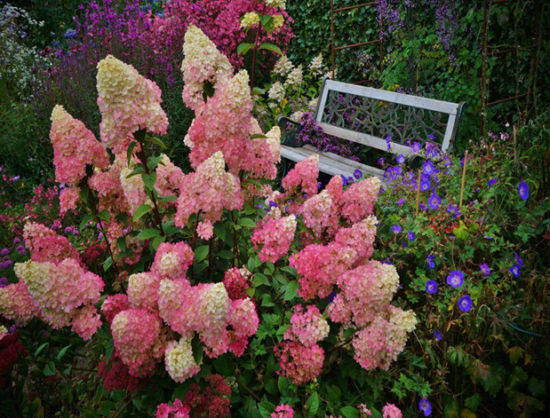
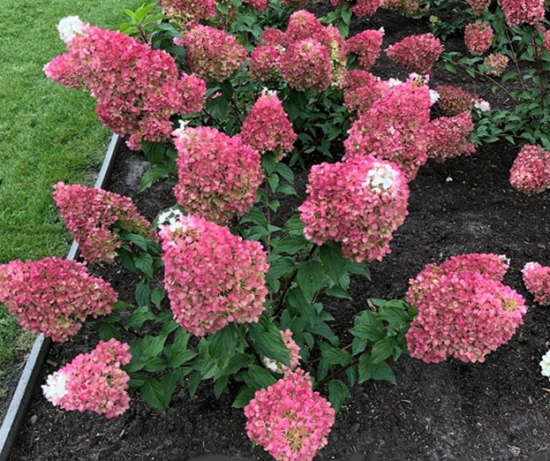
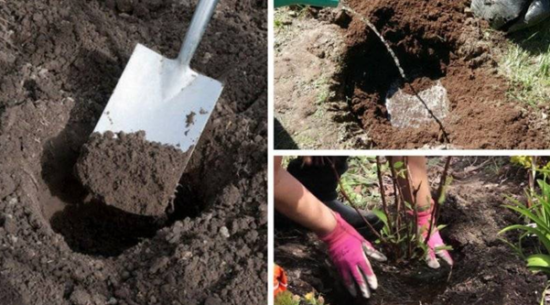
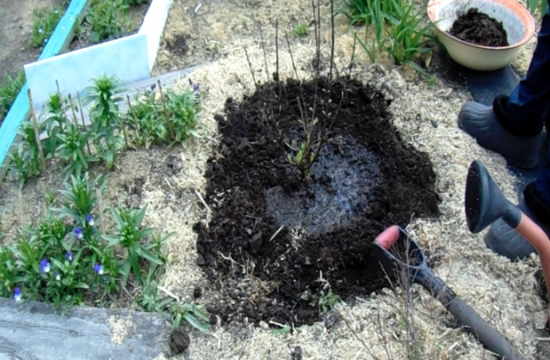
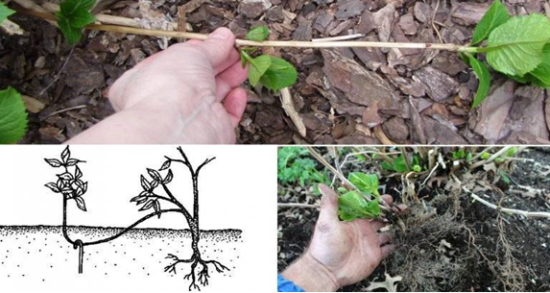
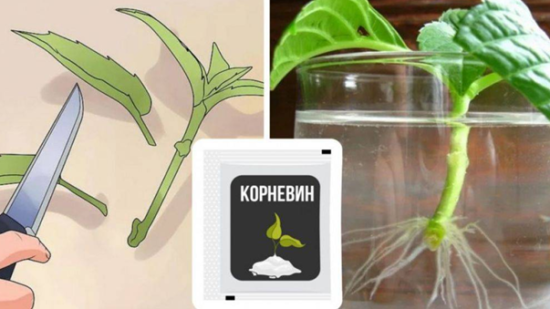
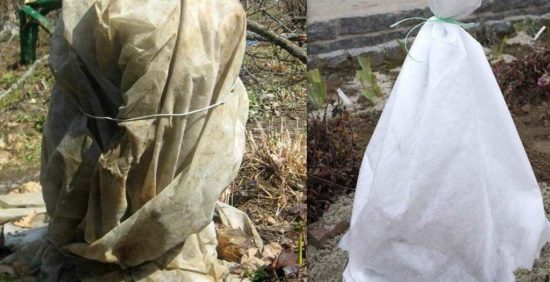
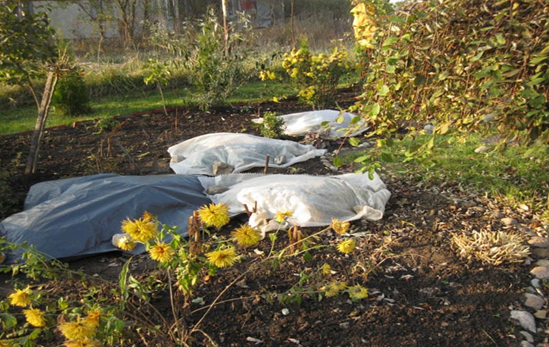
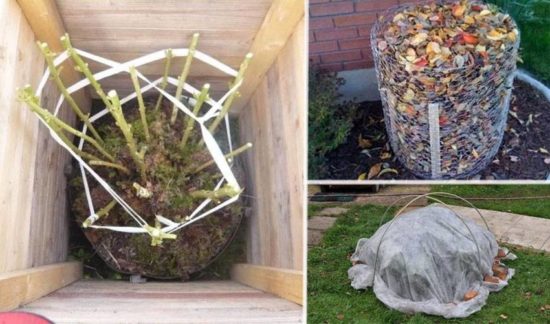
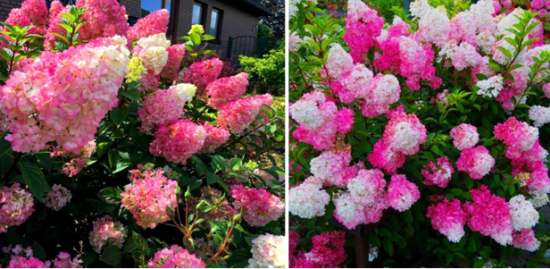
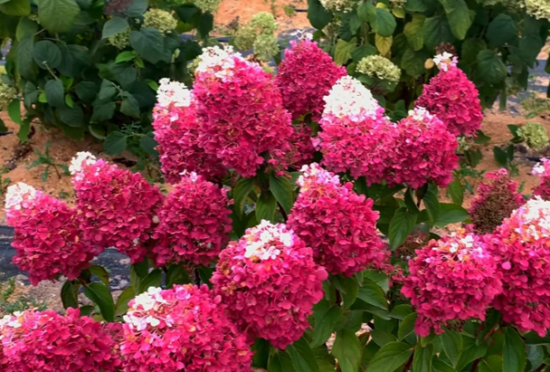

 CUCUMBERS NEVER GET SICK, I'VE BEEN USING ONLY THIS FOR 40 YEARS! I SHARE A SECRET WITH YOU, CUCUMBERS ARE LIKE THE PICTURE!
CUCUMBERS NEVER GET SICK, I'VE BEEN USING ONLY THIS FOR 40 YEARS! I SHARE A SECRET WITH YOU, CUCUMBERS ARE LIKE THE PICTURE! You can dig a bucket of potatoes from each bush. Do you think these are fairy tales? Watch the video
You can dig a bucket of potatoes from each bush. Do you think these are fairy tales? Watch the video
 How our fellow gardeners work in Korea. There is a lot to learn and just fun to watch.
How our fellow gardeners work in Korea. There is a lot to learn and just fun to watch. Eye trainer. The author claims that with daily viewing, vision is restored. They don't charge money for views.
Eye trainer. The author claims that with daily viewing, vision is restored. They don't charge money for views. A 3-ingredient cake recipe in 30 minutes is better than Napoleon. Simple and very tasty.
A 3-ingredient cake recipe in 30 minutes is better than Napoleon. Simple and very tasty. Therapeutic exercises for cervical osteochondrosis. A complete set of exercises.
Therapeutic exercises for cervical osteochondrosis. A complete set of exercises. Which indoor plants match your zodiac sign?
Which indoor plants match your zodiac sign? What about them? Excursion to German dachas.
What about them? Excursion to German dachas.